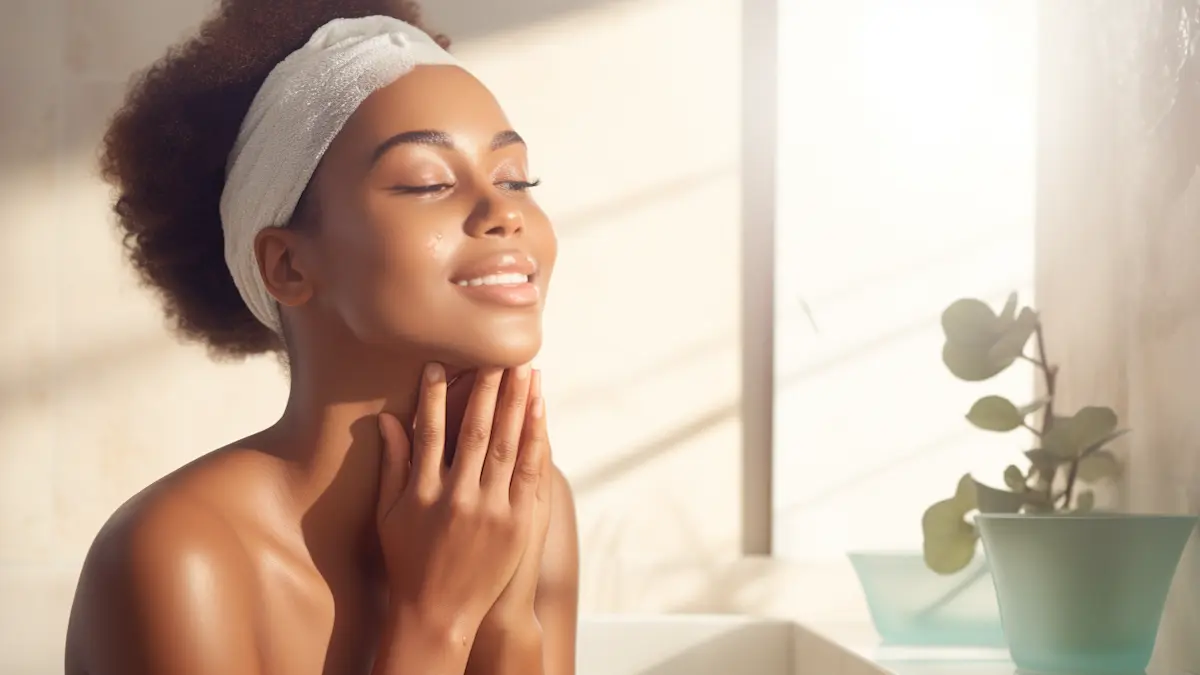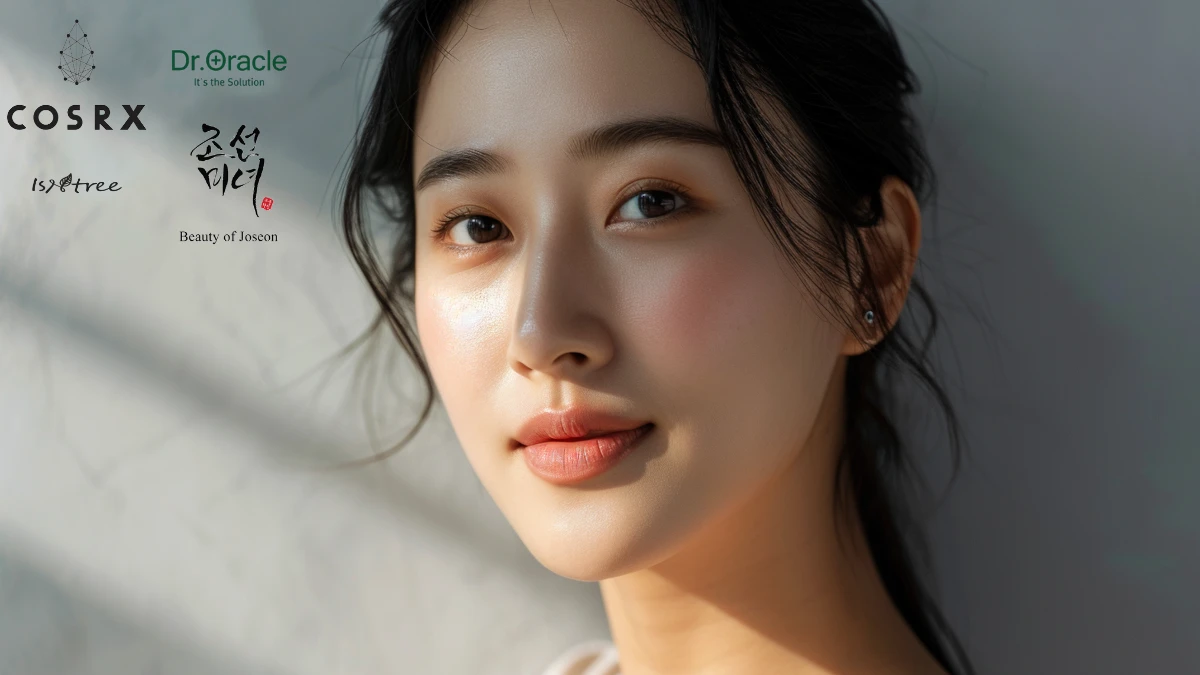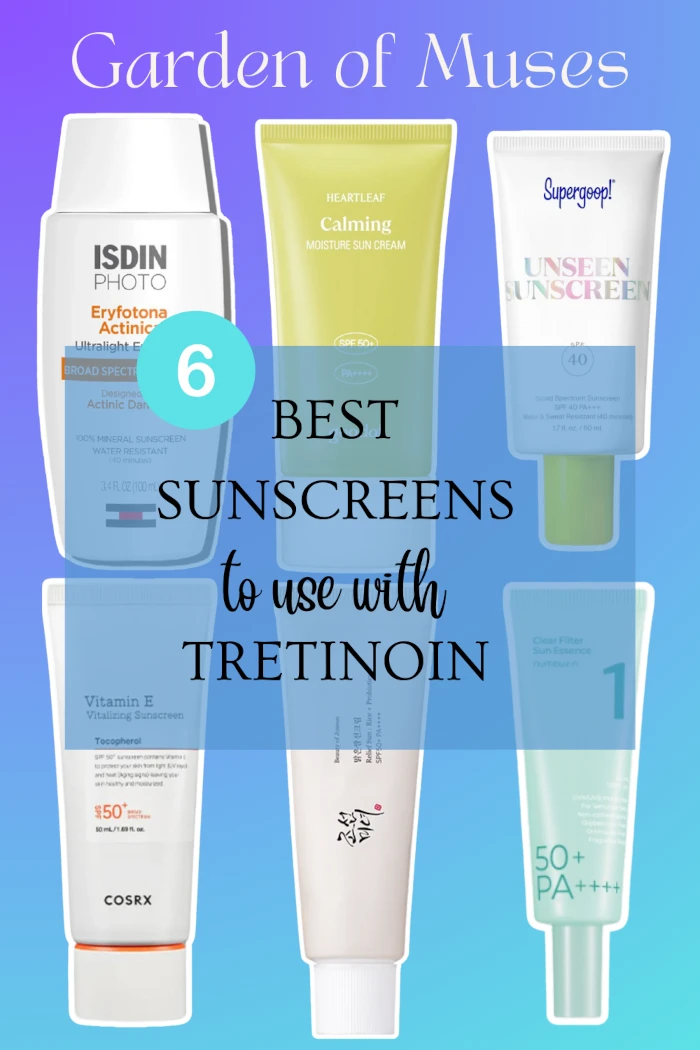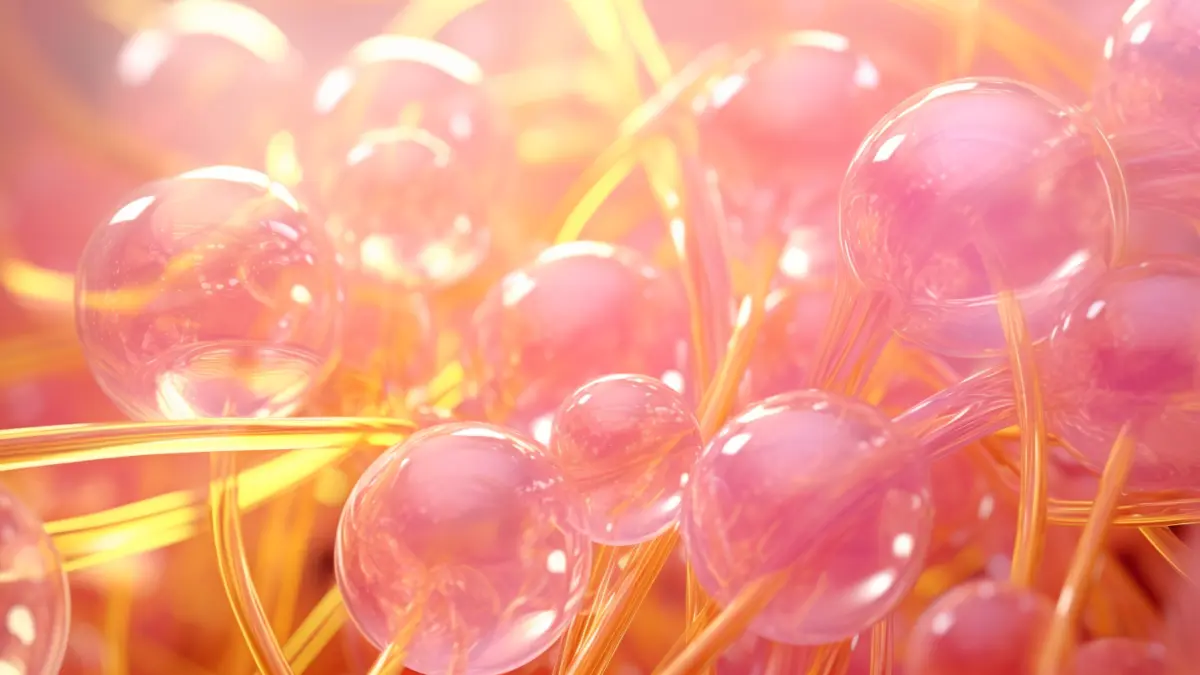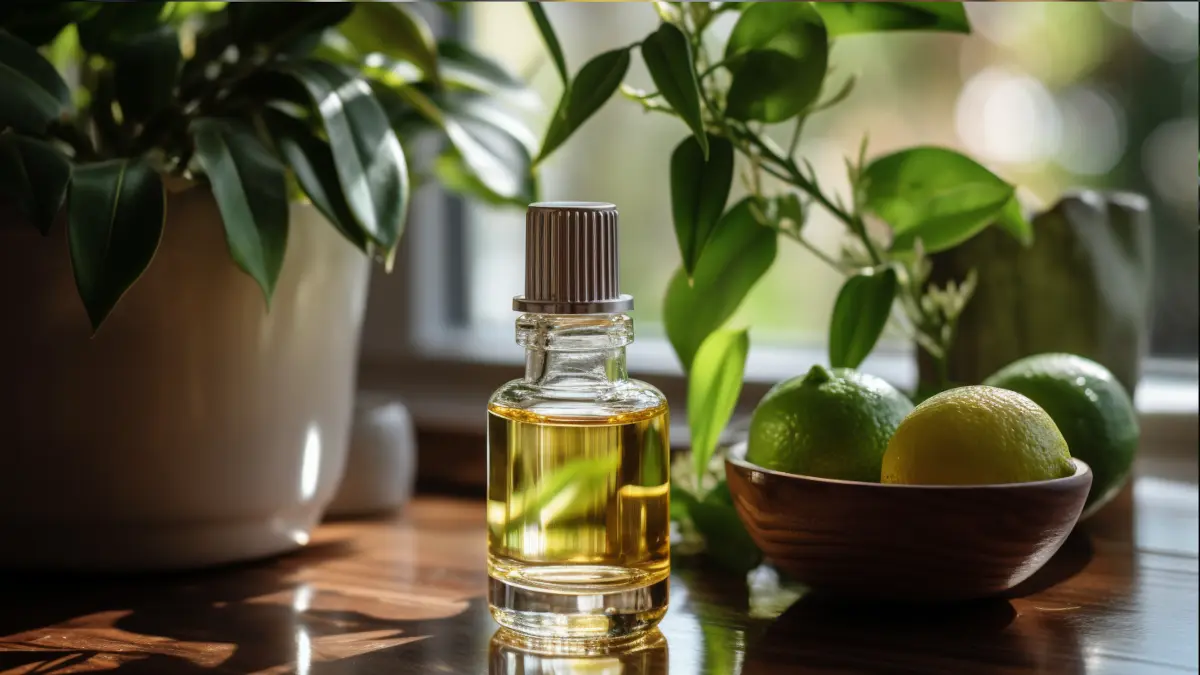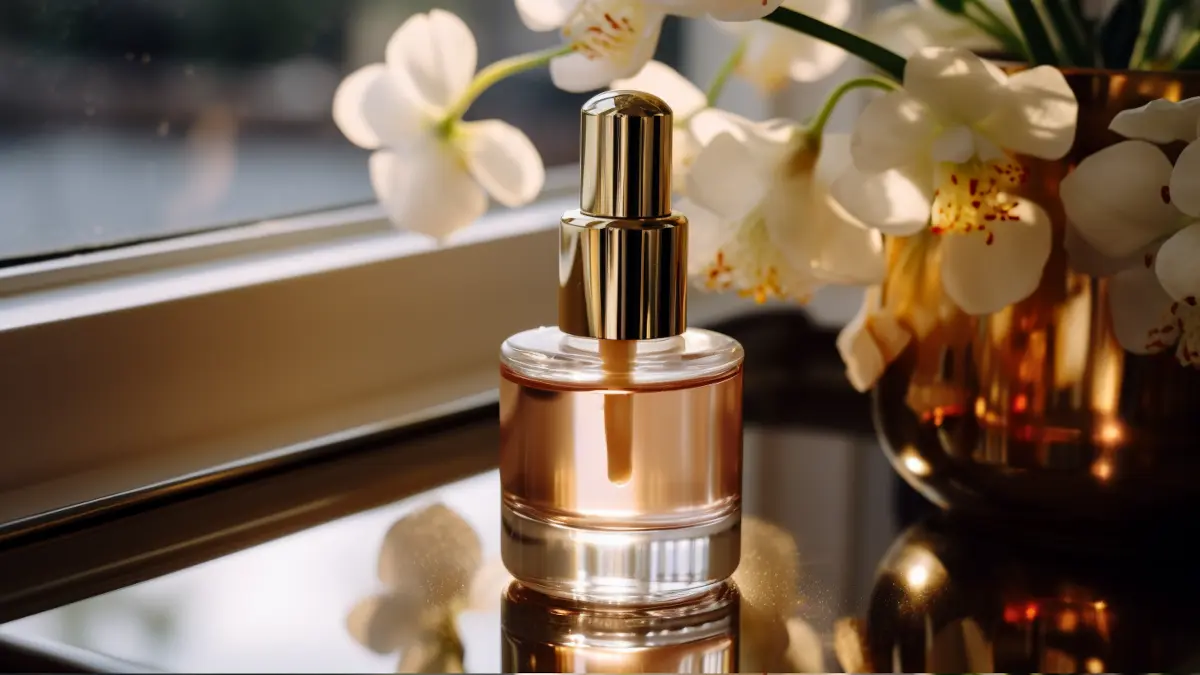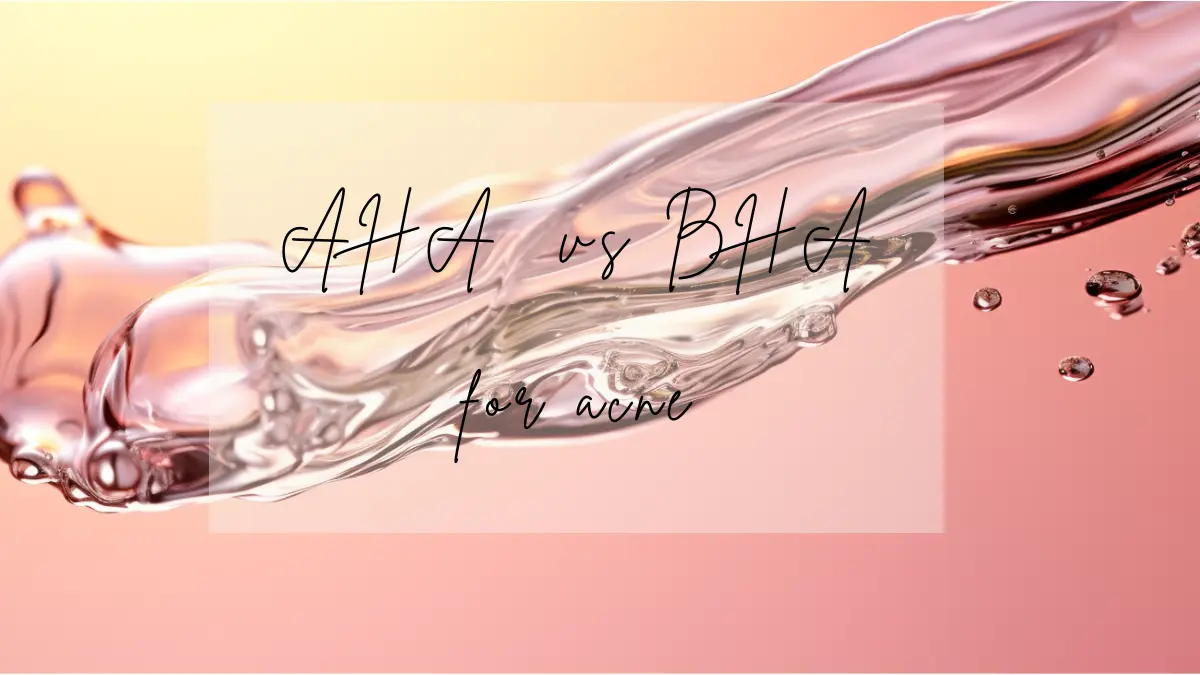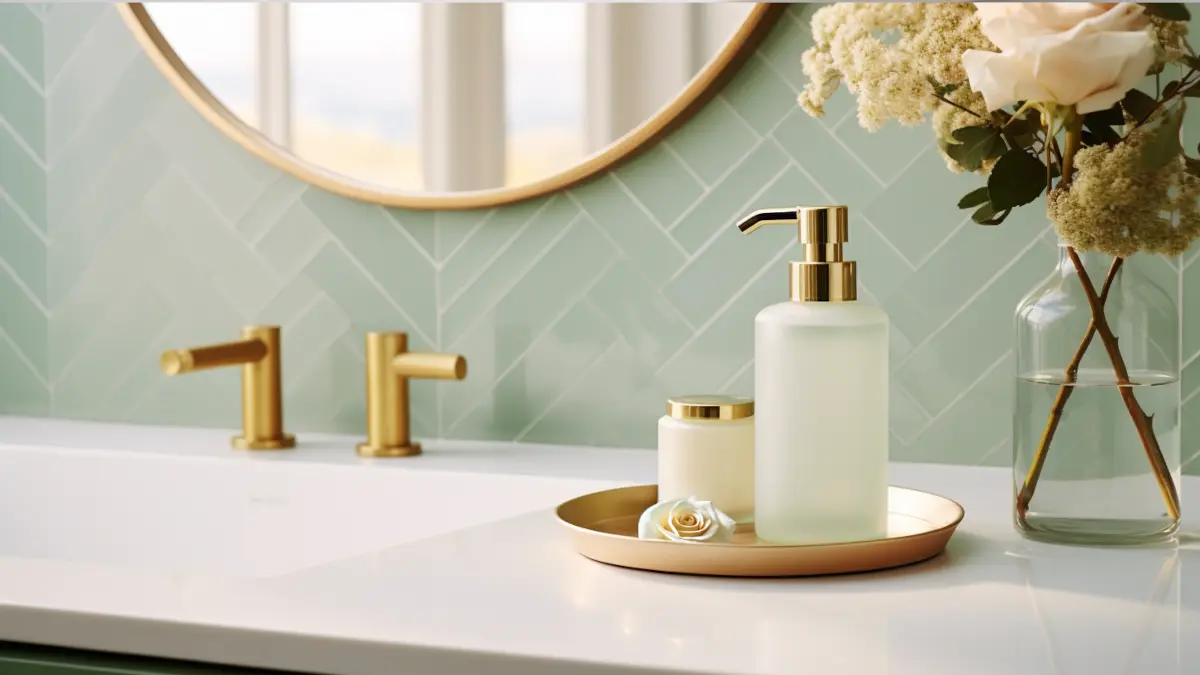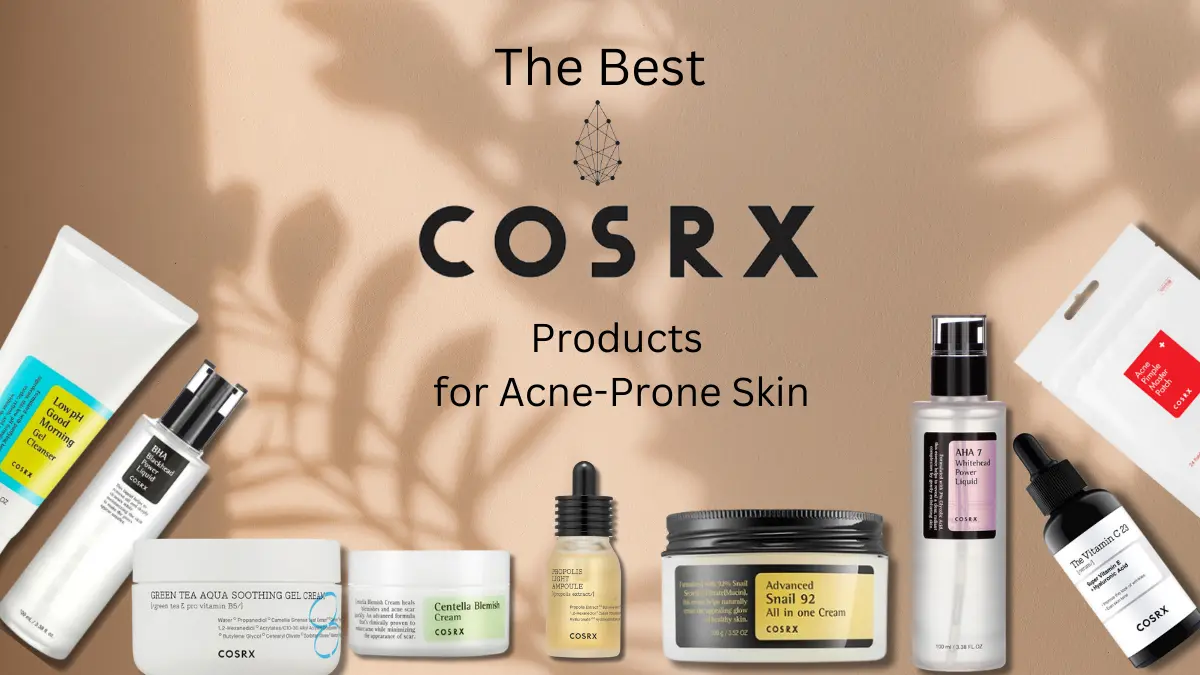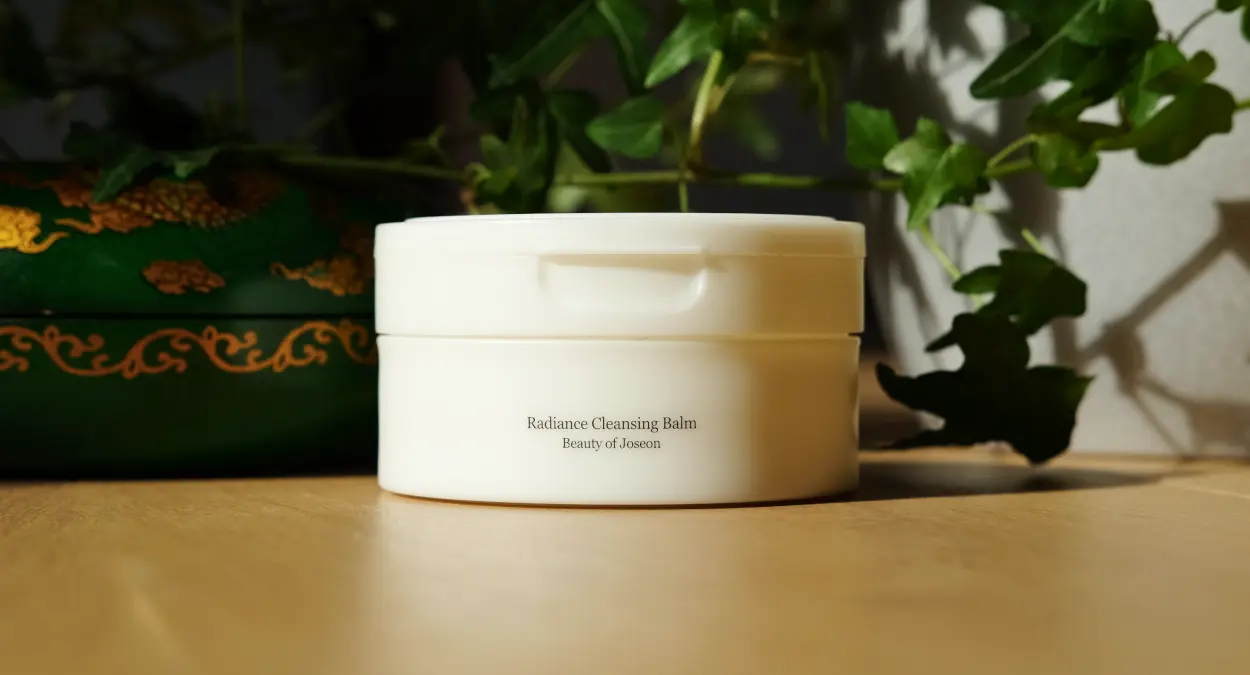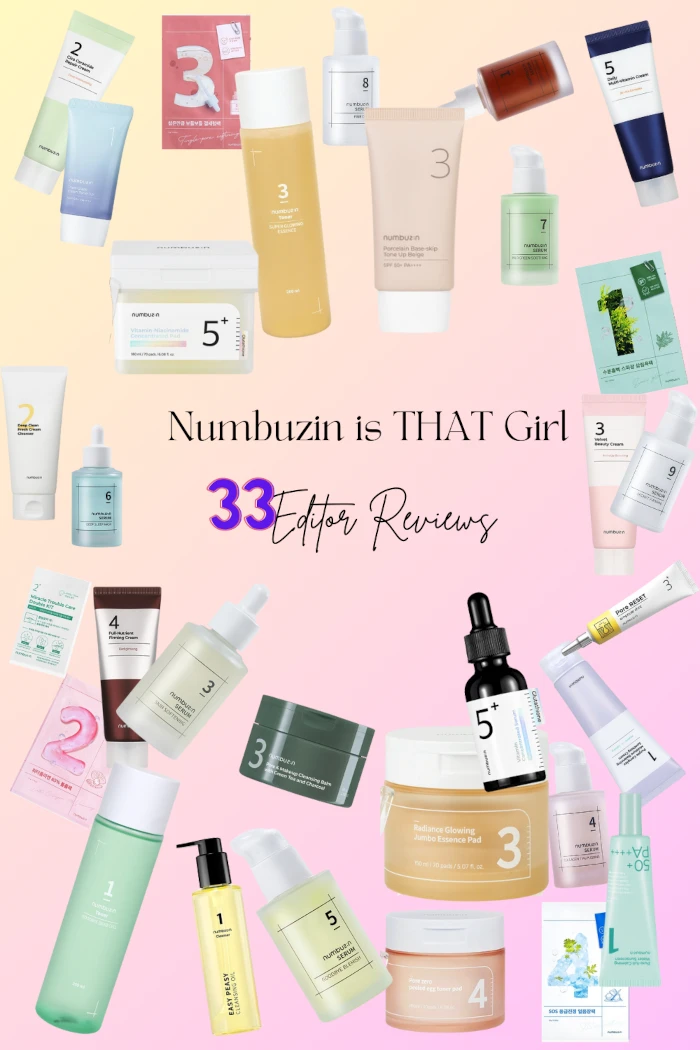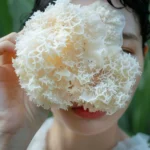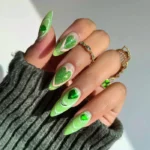The first step to starting your Korean skincare routine is finding the right cleanser for your skin type. In this post, I am referring to water-based cleansers, a.k.a. second-step cleansers.
If you have oily and acne-prone skin, this can be especially difficult since you don’t want to start your skincare routine with something that will cause your skin to produce more oil or break out. You want to improve your skin.
So many Korean cleansers are on the market that you can have trouble deciding which one to buy. I just searched for ‘cleanser’ on Yesstyle*, which came back with thousands of products. Wow!
I spent many hours before I decided which cleanser to order, and even then, I still second-guessed my choice!
When searching for the best Korean cleansers, you need to consider the ingredients list, the pH of the product, and affordability.
Don’t have time to read this whole article right now? Here’s what I found are the 10 best Korean water-based cleansers.
Guide to the Best Korean Water-Based Cleansers:
What Is a Water-Based Cleanser?
You may have heard of the Korean double-cleansing method but aren’t sure what that entails.
The first step in a Korean skincare routine involves cleansing your skin twice: an oil-based cleanser followed by a water-based cleanser – AKA double cleansing! Most people like to ‘double cleanse’ in the evening and only use a water-based cleanser in the morning to keep the skin’s moisture barrier nice and healthy.
The main difference between water-based and oil-based cleansers is that oil-based cleansers remove makeup, sunscreen, and excess sebum, while water-based cleansers remove substances such as bacteria, sweat, and dead skin cells.
Water-based cleansers or second-step cleansers are probably the cleansers most people picture when facial cleansers are mentioned. A cream that lathers into thick bubbles with water — my teenage self had so much fun applying it, thinking it was doing wonders for my skin.
But this bubbly nature has earned water-based cleansers a somewhat controversial reputation. The agents that turn your cream into foam are also responsible for stripping away moisture from your skin. Luckily, the skincare market has addressed this issue with new formulations that are still as effective but gentler on delicate skin.
You can learn more about double cleansing in our Guide to Double Cleansing. I highly recommend checking out that post if you’re at the beginning of your skincare journey. I recommend you check out my other post on Korean Skincare Routine – The Ultimate Step-by-Step Guide if you’re unsure what products to start. Also, if you’re interested in Korean skincare ingredients, look here.
pH: Essential to Consider When Buying a Water-Based Cleanser
I’ve often emphasized the importance of using a low-pH cleanser. That’s because one of the biggest skincare mistakes I’ve made was using a harsh cleanser that disrupted my moisture barrier and stripped my skin of its natural defenses. The pH of your second cleanser is essential regardless of your skin type. However, I think it’s essential for people with oily and acne-prone skin.
The pH of a healthy acid mantle, the protective layer of skin comprised of sebum mixed with lactic and amino acids from sweat, is a little acidic (4 to about 5.6). This is because slightly acidic skin helps to ward off bacteria and fungi and helps prevent trans-epidermal water loss.
Studies show that washing with a cleanser with a pH above 5.5 for just one minute twice a day raises the skin’s pH long-term and that the skin’s pH only decreases once the change has been made to an acidic cleanser.
Therefore, choosing a water-based cleanser with a low pH, meaning a pH of 5.5 or below, is essential. This is especially so if you have acne-prone skin, as using a cleanser with a high pH may cause increased growth of acne-causing bacteria and strip your skin of its natural oils, causing it to produce more sebum, which clogs your pores with sebum and bacteria, and thereby results in more acne!
Many Western cleansers leave your skin feeling tight and squeaky clean. This is a bad thing as the pH of these cleansers is too high, and you’re stripping and destroying the protective acid mantle layer of your skin. Ever wonder why your skin feels so oily and greasy just a few hours after washing with one of these cleansers? It’s because your skin is trying to compensate for losing its protective layer by producing more oil.
This might shock you, but you may have oily or acne-prone skin because of a damaged acid mantle. Repairing your skin barrier should be the first thing you do to reduce acne and slow your skin’s sebum production.
Are All Cleansers with a Low pH Good?
No. Just because a cleanser has a low pH doesn’t mean it is good. This is because pH is not the only factor that makes a cleanser good or bad.
The formulation of the cleanser is essential. Studies show that a cleanser’s pH does not guarantee that it is mild to the skin.
Moreover, although they won’t strip your skin of its moisture barrier, some low-pH cleansers may not cleanse it well enough, leaving dirt, sweat, and bacteria-filled pores. Not only could this result in more breakouts, but it also means that your skin isn’t ready to absorb all the beneficial ingredients of products you apply afterward.
Foaming Agents
I love a satisfying foaming cleanser first thing in the morning. But what if I told you to be suspicious of a very foamy cleanser? This is because getting a generous lather often requires additional ingredients that are not very beneficial for your skin. Unfortunately, many cleansing products are designed with soaps and surfactants that can strip the skin of natural oils, leaving it tight, dry, and susceptible to irritation.
These additional ingredients can sometimes include Sodium Lauryl Sulfate (SLS), Sodium Laureth Sulfate (SLES), or ALS (Ammonium Lauryl Sulfate). These surfactants increase the foaming of cleansers, shampoos, and body washes. However, these ingredients are incredibly sensitizing to the skin and cause dryness as they effectively remove oil. They are the main antagonists in most foaming formulas that cause your skin to go from a reservoir to a desert.
Don’t confuse those with less irritating SLES (Sodium Laureth Sulfate) and ALES (Ammonium Laureth Sulfate). Despite what might be passed around the internet, sulfates are not universally irritating, nor more irritating than non-sulfates.
If you’ve ever washed your skin and felt it pull tight against your face afterward, you have likely disrupted the natural layer that protects skin against bacteria and moisture loss. You want the skin to feel fresh and supple, not tight and dry.
It can get confusing trying to remember all the foaming ingredients to avoid, so my best advice is to look for products marketed as ‘sulfate-free. ‘ You can also enter your product of choice into the SkinCarisma database, which will tell you if it is sulfate-free.
Comedogenic Ingredients
Comedogenic ingredients are those that are likely to clog pores with sebum and debris, leading to what is known as comedogenic acne.
If you’re very acne-prone, it’s best to check the products’ ingredients before you use them to see if they contain comedogenic ingredients.
Instead of remembering the comedogenic ratings of all skincare ingredients, I recommend looking at the whole list of ingredients on the SkinCarisma website, which also gives the rating of any comedogenic ingredients present.
If you have acne-prone skin, the general advice is only to use products containing ingredients that are rated 0, 1, or 2. It’s best to avoid products containing ingredients rated higher than 2. However, ingredients rated with a 3 can be okay if the product you are using is a cleanser.
Comedogenic ingredients don’t clog pores overnight. It usually takes 4-6 weeks to break you out. This makes it difficult to determine which product in your routine is causing you to break out.
It’s important to note that everyone’s skin reacts slightly differently to comedogenic ingredients.
Also, how a product is significantly formulated affects how comedogenic an ingredient is! Ingredient combinations can make a comedogenic ingredient non-comedogenic (and vice-versa). I should also mention that the concentration of comedogenic ingredients dramatically affects how much your skin may react (most of the time, this information is not provided, though).
The bottom line is that when it comes to comedogenic ingredients – the science is not clear cut, and it comes down to how a product is formulated and your skin chemistry. Since it’s inconvenient to patch-test a product for 4-6 weeks to see if your skin reacts to a specific ingredient, I would avoid products rated 3 or above.
Fungal Acne Triggering Ingredients
Fungal acne is also known as Pityrosporum folliculitis or Malassezia folliculitis. It is a type of acne that responds poorly to traditional acne-treating methods.
Certain ingredients have been shown to promote the growth of acne-causing fungi. These include fatty acids, oils, esters, polysorbates, and fermented ingredients.
Similar to comedogenic ingredients, the nature of fungal acne-triggering ingredients is quite complex, with many factors affecting whether ingredients exacerbate fungal acne, such as:
- the concentration of ingredients;
- other ingredients that fungal acne-triggering ingredients may be combined with;
- the combining effect of ingredients present in other products you use in your routine;
The Folliculitis Scout website is an excellent resource for checking whether a product you would like to use contains fungal-triggering ingredients.
Citric Acid
Most cleansers contain Citric acid, so it is worth discussing it. Citric acid comes from citrus fruits and is commonly used as a pH adjuster in skin care products.
It is technically an AHA, but don’t rub lemons on your face to get its exfoliation benefits. Instead, please choose a product that ensures its pH and concentration are appropriate for the skin.
Citric acid is also an anti-aging ingredient proven to increase skin thickness. However, bear in mind that if you have sensitive skin, it may irritate you.
The Best Korean Water-Based Cleansers
I spent many hours choosing what I believe are the current best Korean water-based cleansers. This involved consulting my fellow editors, reading many skincare blogs, reviews, and skincare subreddits, watching informative YouTube videos, and testing a ton of cleansers on my skin. Someone’s gotta do it, right? I also scoured through ingredient information on the SkinCarisma, CosDNA, and INCIDecoder websites!
Many factors came into play when narrowing down to the final products: pH, presence of comedogenic and fungal acne-triggering ingredients, and addition of acne-friendly ingredients. Although price and customer ratings didn’t affect the products I chose, I chose products that are well-known and reviewed often.
I haven’t included any cleansers with high pH as cleansers with a pH higher than 5.5 could compromise your skin’s acid mantle and worsen acne.
I’ve tried so many cleansers, but these remain my highest bar. All other cleansers get compared to these for me. Here are the best Korean water-based cleansers:
1. Beplain Mung Bean pH-balanced Cleansing Foam

I love this cleansing foam so much. It’s Korea’s best-rated cleanser, but it is highly underrated in the West. Many haven’t yet heard of Beplain Mung Bean pH-balanced Cleansing Foam. Still, it has over 20k reviews on the Korean cosmetics app Hwahae.
Beplain Mung Bean pH-balanced Cleansing Foam is an excellent, weakly acidic, non-stripping foaming cleanser. It is the best because it contains only three mild, naturally derived surfactants, has no comedogenic ingredients, is fungal acne-safe, has a weakly acidic pH, and is non-stripping.
Mung bean is a plant rich in antioxidant compounds and has antibacterial properties attributed to its various nutrients and bioactive ingredients. In a recent in vivo study, a mask made from a mixture of mung bean and selenium was found to have brightening, moisturizing, and anti-aging activities. It has a bit of physical exfoliation from mung bean extract that quickly melts into the skin. It’s environmentally friendly, too, because it doesn’t contain microplastics.
This cleanser comes out like a paste. It lathers into a thick, creamy cloud foam, which gives such a pleasant experience. Beplain Mung Bean pH-balanced Cleansing Foam is super gentle and leaves the skin hydrated and moisturized without stripping my natural oils.
However, if you want one for a complete wash-off of your makeup from a single go, this might not be your best choice because it’s so gentle. It does an excellent job as a second cleanser, though; my skin feels very plump after using it.
Beplain Mung Bean pH-balanced Cleansing Foam does not have a noticeable scent, which I like, and it is perfect for sensitive skin as it doesn’t contain fragrance or essential oils either.

This is the best water-based cleanser I’ve ever used. I would 100% recommend it, and I feel like it’s going to be hard to beat. I can’t imagine a better cleanser.
It’s a good dupe for the B_LAB Matcha Hydrating Foam Cleanser.
Best suited for: All skin types, including sensitive
pH: 5.5
Pros:
- Hydrating & not stripping with 12 herbal extracts
- Sulfate-free, alcohol-free, fragrance-free, and essential oil-free
- No comedogenic ingredients
- Fungal acne safe
- Budget-friendly
Cons:
- Absolutely none 🙂
Price: $12
Beplain Mung Bean pH-balanced Cleansing Foam Ingredients list (last checked 2025)
Glycerin, Vigna Radiata Seed Extract (33%), Sodium Cocoyl Glycinate, Sodium Lauroyl Glutamate, Water, 1,2-Hexanediol, Hydroxypropyl Starch Phosphate, Phaseolus Radiatus Seed Powder (0.9%), Lauryl Betaine, Hydroxyacetophenone, Ethylhexylglycerin, Phellodendron Amurense Bark Extract, Sodium Chloride, Chamomilla Recutita Flower Extract, Betaine, Polyquaternium-39, Melia Azadirachta Leaf Extract, Melia Azadirachta Flower Extract, Dextrin, Theobroma Cacao (Cocoa) Seed Extract, Coccinia Indica Fruit Extract, Allantoin, Aloe Barbadensis Flower Extract, Solanum Melongena (Eggplant) Fruit Extract, Centella Asiatica Extract, Ficus Carica (Fig) Fruit Extract, Ocimum Sanctum Leaf Extract, Corallina Officinalis Extract, Curcuma Longa (Turmeric) Root Extract, Hydrogenated Lecithin, Ceramide NP, Sodium Hyaluronate, Camellia Sinensis Leaf Powder.
Ingredients referred from INCIDecoder.
Surfactant Active Herbs Brightening Humectant/Moisturizing
2. Torriden Dive In Cleansing Foam
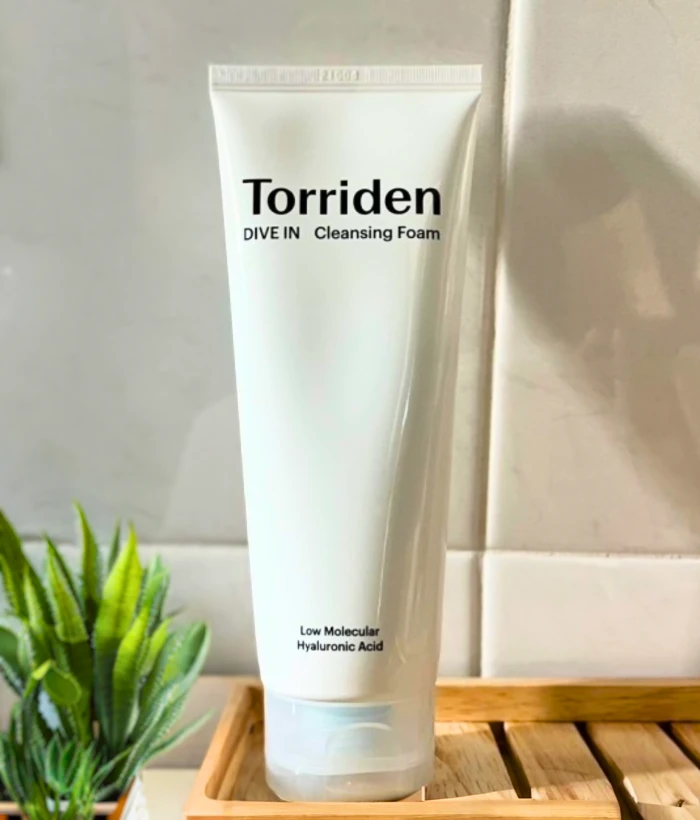
This cleanser has a mild, non-irritating formula using coconut-derived surfactants and no SLS. It is formulated with eight types of hyaluronic acid, glycerin, panthenol, and allantoin. It cleans, replenishes moisture, and makes my skin feel hydrated.
This Korean second-step cleanser also includes witch hazel extract, a known astringent and sebum-regulating ingredient. It is used in many cleansers and toners as a pore tightener and to replace alcohol. It contains tannin, an effective anti-inflammatory and astringent component that treats soreness and bruises on the skin. It is also an effective antioxidant that can prevent free radicals that might lead to skin aging. The ingredient is also effective at enhancing the appearance of dry or damaged skin, reducing flakiness, regulating sebum, and tackling acne-causing bacteria. It’s an all-in-one miraculous ingredient commonly used in cleansers!
Torriden Dive In Cleansing Foam cleans my face without irritating my skin or causing redness. It doesn’t remove makeup well, so you must wash your face first with an oil-based cleanser.
This cleanser’s pH is weakly acidic. Torriden Dive In Cleansing Foam cleanses well without leaving a slippery finish.

It foams easily, and I only use a small pea-sized amount, so this cleanser lasts a lot. I also like how the bottle bounces back up after squeezing.
Best suited for: All skin types, including sensitive
pH: 5.5
Comedogenic Ingredients: Butylene glycol (1/5), Tocopherol (2/5)
Pros:
- Hefty list of humectants
- Sulfate-free, alcohol-free, fragrance-free, and essential oil-free
- Fungal acne safe
- Budget-friendly
Cons:
- Absolutely none 🙂
Price: $8-$15
Torriden Dive In Cleansing Foam Ingredients list (last checked 2025)
Water, Glycerin, Sodium Cocoyl Glycinate, Sodium Lauroyl Glutamate, Sodium Hyaluronate, Hyaluronic Acid, Hydrolyzed Hyaluronic Acid, Sodium Acetylated Hyaluronate, Hydroxypropyltrimonium Hyaluronate, Hydrolyzed Sodium Hyaluronate, Sodium Hyaluronate Crosspolymer, Potassium Hyaluronate, Panthenol, Allantoin, Trehalose, Tocopherol, Hamamelis Virginiana (Witch Hazel) Extract, Camellia Sinensis Leaf Extract, Chamomilla Recutita (Matricaria) Extract, Butylene Glycol, Dipropylene Glycol, Hydroxypropyl Starch Phosphate, Glyceryl Stearate SE, Potassium Benzoate, Sodium Chloride, Polyquaternium-67, Sodium Acetate, 1,2-Hexanediol, Citric Acid, Ethylhexylglycerin, Disodium EDTA, Malachite Extract.
Ingredients referred from Torriden’s Official Website.
Surfactant Active Herbs Humectant/Moisturizing
3. B_LAB Matcha Hydrating Foam Cleanser
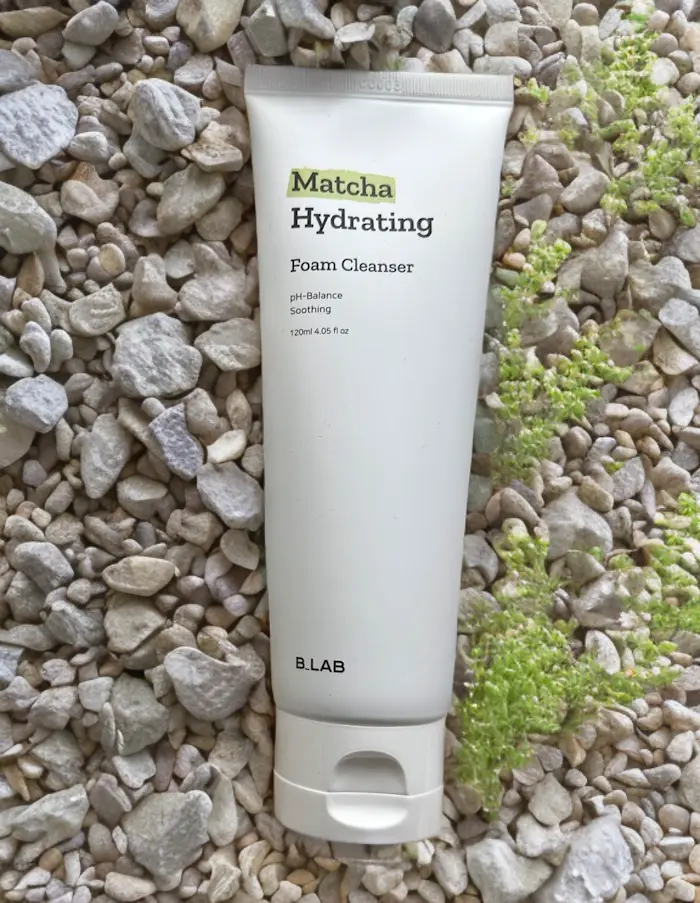
If you don’t have time to muck around and need a water-based cleanser now, choose the B_LAB Matcha Hydrating Foam Cleanser. Where do I start with this cleanser? It’s raved about so much on the internet and is one of the best-selling water-based cleansers on Yesstyle.
B.LAB Matcha Hydrating Foam Cleanser is a soft, bouncy paste with little matcha particles. Once in contact with water, it quickly turns into workable and soft foam. Also, I love the scent of matcha.
It feels light yet nourishing. It leaves the skin soft, plump, and evenly toned without feeling stripping or drying.
B.LAB Matcha Hydrating Foam Cleanser’s antioxidant-packed formulation (from matcha) also helps strengthen your skin barrier, making it more resilient against environmental pollutants. It’s free from harmful SLS, too! It’s gentle but effective as it contains glycerin (the second ingredient) and Hyaluronic Acid. Green tea helps to reduce sebum production and is not drying.
Allantoin is an emollient that protects the skin, a calming agent to soothe irritation and promote wound healing, an exfoliant to shed dead skin cells, a humectant, and super gentle.
B.LAB Matcha Hydrating Foam Cleanser is sulfate-free and contains only two gentle cleansing agents, Sodium Cocoyl Glycinate, and Sodium Lauroyl Glutamate, but it cleans the skin quickly and efficiently.
It is also reasonably priced and very cost-effective. You only need a pea size to clean all your face.
I went through many tubes of this cleanser already, and it is pretty money-saving since one tube lasts longer than many of the cleansers I have tried.
Best suited for: Dry and normal skin types
pH: 5.5
Key Ingredients: Glycerin, Green Tea extracts
Comedogenic Ingredients: Butylene glycol (1/5)
Pros:
- Glycerin, Green Tea extracts
- Sulfate-free, alcohol-free, fragrance-free, and essential oil-free
- Fungal acne safe
- Unbeatable price
Cons:
- Absolutely none 🙂
Price: $4-$9
B_LAB Matcha Hydrating Foam Cleanser Ingredients list (last checked 2025)
Water, Glycerin, Sodium Cocoyl Glycinate, Sodium Lauroyl Glutamate, 1,2-Hexanediol, Camellia Sinensis Leaf Extract, Betaine, Hydroxypropyl Starch Phosphate, Centella Asiatica Extract, Ficus Carica (Fig) Fruit Extract, Laminaria Japonica Extract, Eclipta Prostrata Leaf Extract, Melia Azadirachta Leaf Extract, Melia Azadirachta Flower Extract, Ulmus Davidiana Root Extract, Amaranthus Caudatus Seed Extract, Hydrogenated Lecithin, Lauryl Betaine, Camellia Sinensis Leaf Powder, Sodium Chloride, Polyquaternium-39, Decylene Glycol, Allantoin, Butylene Glycol, Fructan, Fructooligosaccharides, Beta-Glucan, Ceramide NP, Hydrolyzed Hyaluronic Acid, Hydroxyacetophenone, Ethylhexylglycerin.
Ingredients referred from INCIDecoder.
Surfactant Active Herbs Humectant/Moisturizing
4. COSRX Low pH Good Morning Gel Cleanser
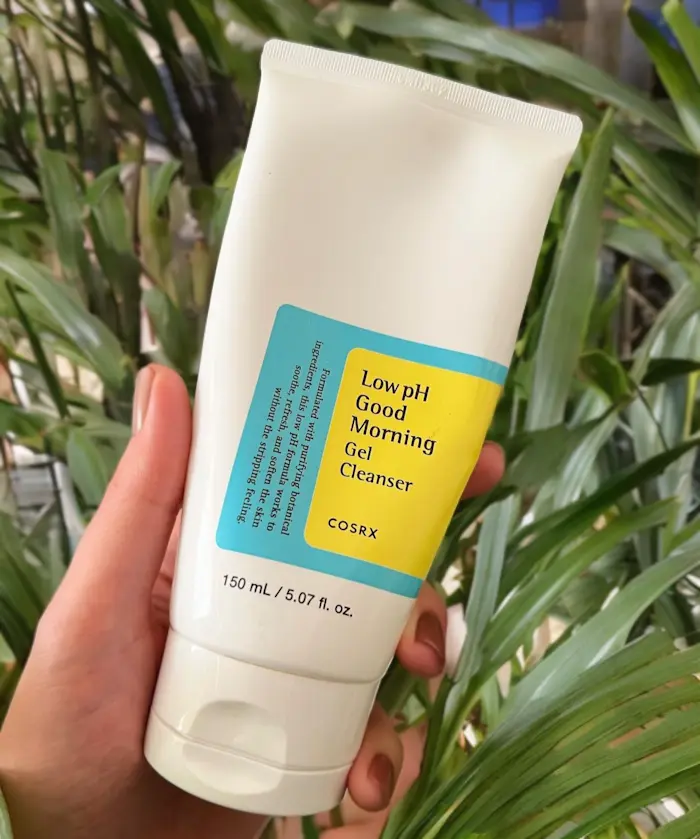
I’ve been using this cleanser since I started my Korean skincare routine, and I haven’t felt the need to switch to another cleanser as I think it works well for my oily and acne-prone skin.
But what makes this cleanser so great for oily and acne-prone skin? For starters, the pH is one of the lowest on the market (only 3.5), which keeps your skin’s acid mantle very happy.
COSRX Low pH Good Morning Gel Cleanser has become a popular alternative for those who have sworn off foaming cleansers. As per its namesake, this cleanser is a clear liquid that contains milder ingredients, none of the SLS that plagues foaming cleansers. Its lighter consistency makes it a dream for acne-prone skin or oily skin.
It contains two acne-fighting ingredients, betaine salicylate, tea tree leaf oil, and one anti-aging ingredient, citric acid. However, if you also have sensitive skin, the tea tree leaf oil and citric acid may irritate your skin.
Despite its name, this cleanser is excellent for both day and night use.
This cleanser contains only one comedogenic ingredient: butylene glycol. I use the word ‘only‘ as this ingredient is hard to avoid in Korean skincare products and has the lowest rating of 1.
Suppose you suspect you suffer from fungal acne. In that case, you may need to choose another cleanser I’ve reviewed here, as it does contain two fungal acne-triggering ingredients (polysorbate 20 and saccharomyces ferment).
Best suited for: Oily and Combination Skin
pH: 3.5
Comedogenic Ingredients: Butylene glycol (1/5)
Pros:
- Sulfate-free, alcohol-free, fragrance-free
- Inexpensive
Cons:
- Tea Tree essential oil and Citric Acid are possible irritants
- Polysorbate 20 and Saccharomyces ferment could trigger fungal acne
Price: $8-$13
COSRX Low pH Good Morning Gel Cleanser Ingredients List (last checked 2025)
Water, Cocamidopropyl Betaine, Sodium Lauroyl Methyl Isethionate, Sodium Chloride, Polysorbate 20, Styrax Japonicus Branch/Fruit/Leaf Extract, Butylene Glycol, Saccharomyces Ferment, Cryptomeria Japonica Leaf Extract, Nelumbo Nucifera Leaf Extract, Pinus Palustris Leaf Extract, Ulmus Davidiana Root Extract, Oenothera Biennis (Evening Primrose) Flower Extract, Pueraria Lobata Root Extract, Melaleuca Alternifolia (Tea Tree) Leaf Oil, Allantoin, Caprylyl Glycol, Ethylhexylglycerin, Betaine Salicylate, Citric Acid, Ethyl Hexanediol, 1,2-Hexanediol, Trisodium Ethylenediamine Disuccinate, Sodium Benzoate, Disodium EDTA.
Surfactant Active Herbs Humectant/Moisturizing Ferments Possible irritant Essential Oils
5. Beauty of Joseon Green Plum Refreshing Cleanser
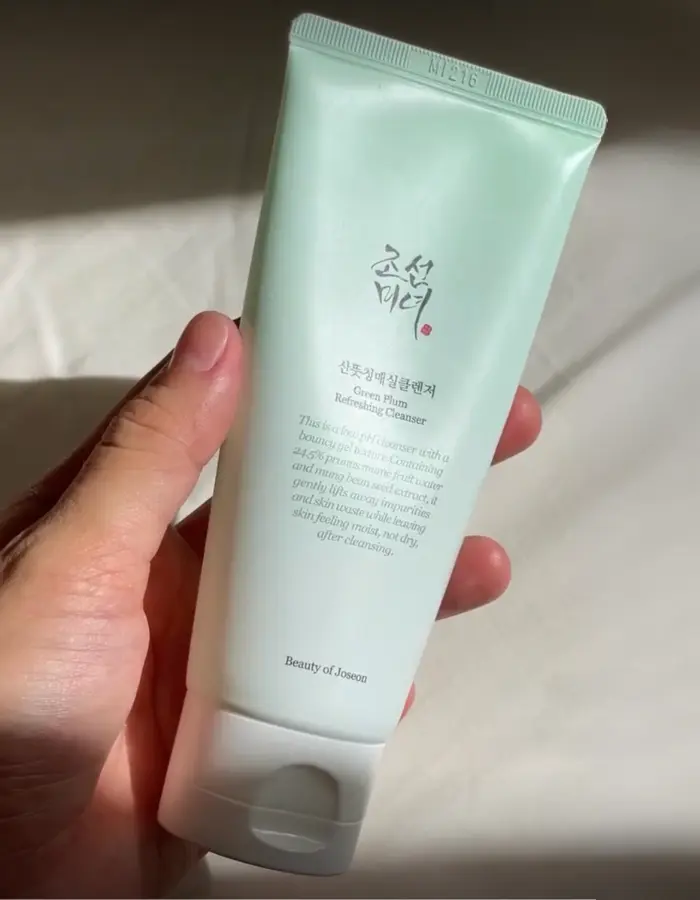
The Beauty of Joseon Green Plum Refreshing Cleanser is a super gentle pale teal featherweight gel that foams into a sparse lather and rinses clean and hydrated skin. I haven’t tested it to remove makeup, so I can’t comment on the make-up-removing qualities. It works incredibly well after oil or balm cleansers and is the perfect companion for the Beauty of Joseon Ginseng Cleansing Oil.
Consistent with its Hanbang tradition, this water-based cleanser showcases ingredients like green plum and rice. The sacred lotus flower extract is a botanical extract that has been shown to have photoprotective effects against UVB exposure. Green tea, heartleaf, and blueberries are antioxidants and soothe the skin.
Beauty of Joseon Green Plum Refreshing Cleanser contains only one low-ranking comedogenic ingredient – butylene glycol again – and one fungal acne-triggering ingredient, Coconut Acid. It is sulfate-free, with the added benefit of glycerin, my favorite humectant.
Best suited for: All skin types
pH: 5.5
Comedogenic Ingredients: Butylene glycol (1/5)
Pros:
- Sulfate-free, alcohol-free, fragrance-free, and essential oil-free
- budget-friendly
Cons:
- Coconut Acid is a possible fungal acne-triggering ingredient.
- Citric acid is a possible irritant
Price: $10-$16
Beauty of Joseon Green Plum Refreshing Cleanser Ingredients List (last checked 2025)
Water, Prunus Mume Fruit Water (24%), Cocamidopropyl Hydroxysultaine, Phaseolus Radiatus Seed Extract (3%), Sodium Cocoyl Isethionate, Glycerin, Sodium Chloride, Camellia Sinensis Leaf Extract, Houttuynia Cordata Extract, Nelumbo Nucifera Flower Extract, Oryza Sativa (Rice) Extract, Prunus Mume Fruit Extract, Vaccinium Angustifolium (Blueberry) Fruit Extract, Guar Hydroxypropyltrimonium Chloride, Coconut Acid, Ethylhexylglycerin, Caprylyl Glycol, Sodium Isethionate, Citric Acid, Butylene Glycol, 1,2-Hexanediol, Punica Granatum Extract, Clitoria Ternatea Flower Extract, Garcinia Mangostana Peel Extract, Propylene Glycol Laurate, Sodium Citrate, Disodium EDTA.
Ingredients referred from the Beauty of Joseon official website.
Surfactant Herbs Humectant/Moisturizing Possible irritant
6. Papa Recipe Blemish Enzyme Powder Cleanser
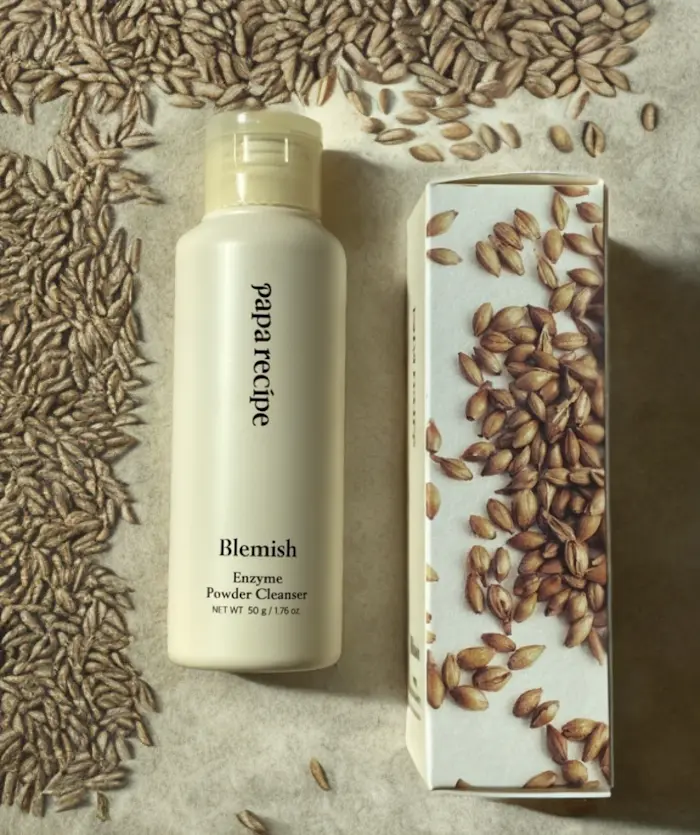
This unique, balanced pH powder-form cleanser has some of the best reviews (especially from people with acne-prone skin). Many swear they will never switch to another cleanser after using this one!
It’s affordable because you only use a tiny bit of powder per wash, and it is travel-friendly!
After using my Beauty of Joseon Radiance Cleansing Balm, I take a teaspoon of powder into my palm, add a little water, and form it into a paste. Thinking it was too thick, I made the mistake of adding more water to my concoction, turning it into a less grainy version of pancake batter. I had much better success using a thicker mixture, which felt like it was doing something.
Massage gently – tender loving care is the difference between treating your face like a plum and treating your face like a potato, friends – for 20 to 30 seconds all over the face, and presto!
My skin felt softer and more hydrated. I got the “oomph” results I was looking for.
Again, this cleanser may not be suitable for you if you are looking to fight fungal acne, as it contains Rice Ferment Filtrate, which may promote and feed the growth of fungal acne fungi.
I have wanted to try this cleanser for myself for a long time now, and after reading many reviews for this article, I’ve been reminded how much I need to get myself a bottle!
Best suited for: Acne-prone skin
pH: 5.5
Comedogenic Ingredients: Butylene glycol (1/5)
Pros:
- Has actives: Arbutin and PHA
- Sulfate-free, alcohol-free, essential oil-free
- Budget-friendly
- Travel-friendly
Cons:
- Fragrance is a possible irritant
- Rice Ferment Filtrate is a possible fungal acne-triggering ingredient.
Price: $13-$26
Papa Recipe Blemish Enzyme Powder Cleanser Ingredients List (last checked 2025)
Zea Mays (Corn) Starch, Sodium Cocoyl Isethionate, Sodium Lauroyl Glutamate, Sodium Palmitate, Diglycerin, Juglans Regia (Walnut) Shell Powder, Oryza Sativa (Rice) Powder, Citric Acid, Panax Ginseng Root Extract, Rosmarinus Officinalis (Rosemary) Leaf Extract, Scutellaria Baicalensis Root Extract, Tricholoma Matsutake Extract, Angelica Keiskei Leaf/Stem Extract, Oryza Sativa (Rice) Extract, Portulaca Oleracea Extract, Arbutin, Rice Ferment Filtrate (Sake), Gluconolactone, Gossypium Herbaceum (Cotton) Extract, Lactobionic Acid, Allantoin, Maltodextrin, Papain, Water, Glycerin, Butylene Glycol, Sodium Benzoate, 1,2-Hexanediol, Fragrance.
Surfactant Active Herbs Humectant/Moisturizing Ferments Possible irritant
7. Sulwhasoo Gentle Cleansing Foam
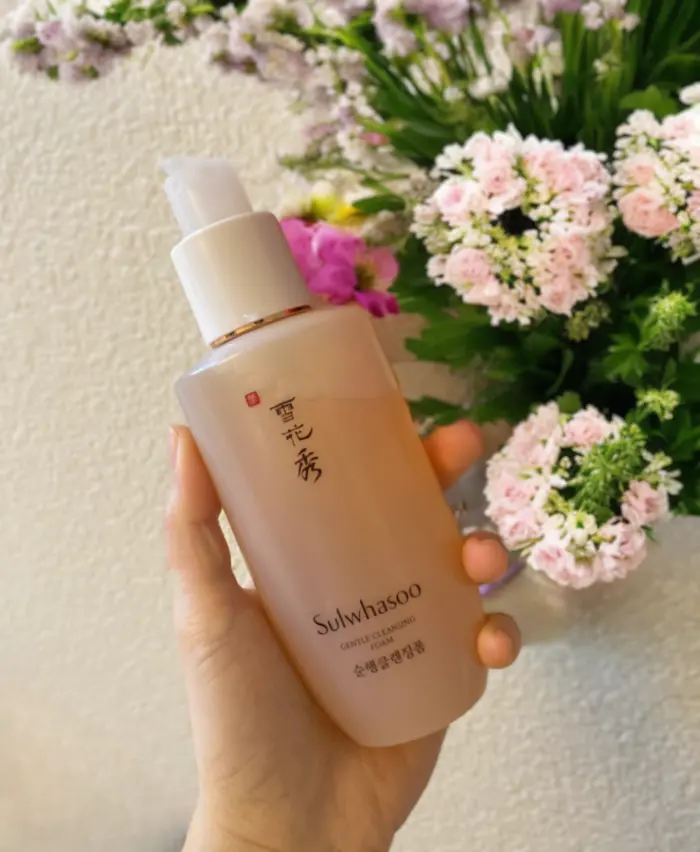
Sulwhasoo is a luxury, prestige skincare brand; hence, the Sulwhasoo Gentle Cleansing Foam cleanser is the priciest on the list of low-pH cleansers I am reviewing here.
Sulwhasoo Gentle Cleansing Foam is a luxury in a pump bottle. Although it is pricey, it is an excellent water-based cleanser. Also, this thing is humongous; you’ve got so much product.
This cleanser has a lovely pearly sheen and foams up nicely if you want to splurge. Use a foaming net, or use your fingers to rub it into a foam.
If you suspect you suffer from fungal acne, you may need to choose another cleanser, as the Sulwhasoo Gentle Cleansing Foam contains four fungal acne-triggering ingredients.
Best suited for: Rich’ Skin (just kidding, all skin types)
pH: 5.0
Sulfate-Free: Yes
Comedogenic Ingredients: Butylene glycol (1/5), Tocopherol (2/3)
Pros:
- Luxurious experience
- Alcohol-free
- Can buy mini
Cons:
- Expensive
- It contains Citric acid, fragrance, and essential oils, which are possible irritants.
- PEG-200 Hydrogenated Glyceryl Palmate, Sodium Methyl Cocoyl Taurate, PEG-7 Glyceryl Cocoate, Isostearic Acid are not fungal acne-safe
Price: $24-$38
Sulwhasoo Gentle Cleansing Foam Ingredients list (last checked 2025)
Water/Aqua/Eau, Potassium Cocoyl Glycinate, Disodium Cocoamphodiacetate, Cocamidopropyl Betaine, Acrylates/Beheneth-25 Methacrylate Copolymer, PEG-200 Hydrogenated Glyceryl Palmate, Sodium Chloride, Pentylene Glycol, 1,2-Hexanediol, Sodium Methyl Cocoyl Taurate, Caprylyl/Capryl Glucoside, PEG-7 Glyceryl Cocoate, Fragrance/Parfum, Isostearic Acid, Potassium Hydroxide, Butylene Glycol, Limonene, Disodium EDTA, Ethylhexylglycerin, Sodium Benzoate, Tetrasodium EDTA, Coix Lacryma-Jobi Ma-Yuen Seed Extract, Citrus Unshiu Peel Extract, Castanea Crenata (Chestnut) Shell Extract, Linalool, Spirodela Polyrhiza Extract, Dioscorea Japonica Root Extract, Dextrin, Theobroma Cacao (Cocoa) Extract, Rubus Idaeus (Raspberry) Fruit Extract, Ulmus Davidiana Root Extract, Salicornia Herbacea Extract, Morus Alba Leaf Extract, Angelica Keiskei Extract, Citric Acid, Tocopherol.
Ingredients referred from the Sulwhasoo official website.
Surfactant Herbs Humectant/Moisturizing Fragrance Possible irritant
8. Pyunkang Yul Low PH Pore Deep Cleansing Foam
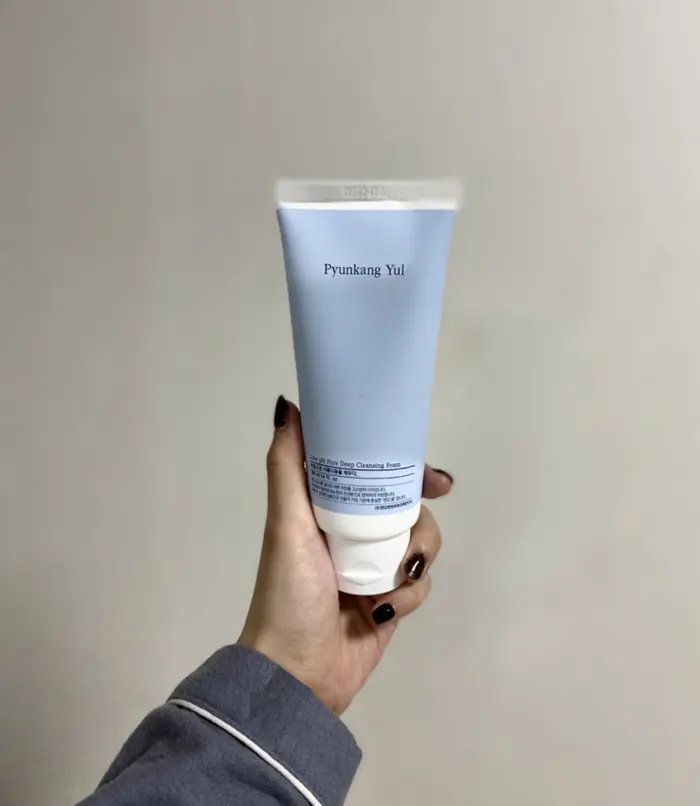
What I appreciate about the Pyunkang Yul Low PH Pore Deep Cleansing Foam is that my skin seems calmer when I use it consistently. Blemishes decide to be the good versions of themselves and disappear quickly. It makes sense: low pH discourages acne bacteria growth, and a lack of irritation from harsh surfactants could mean less blemish-provoking irritation.
With this cleanser, I feel like I’m getting a deep clean; it rinses off completely clean and leaves zero residues behind, but it does not give you that squeaky clean feeling, which is a bad sign that your skin is being stripped of natural oils.
In any case, I’m not taking any chances–I’m about to buy another bottle to keep my good[-for-me] skin streak alive. Please read Adela’s in-depth Pyunkang Yul Low PH Pore Deep Cleansing Foam review.
Best suited for: Oily and acne-prone skin
pH: 5.5
Comedogenic Ingredients: Butylene glycol (1/5)
Pros:
- Sulfate-free, alcohol-free, fragrance-free
- Budget-friendly
Cons:
- Tea Tree essential oil is a possible irritant
- Sodium Cocoyl Isethionate, Sodium Methyl Cocoyl Taurate, and Coconut Acid are possible triggering ingredients.
- A little too much for dry skin types
Price: $9 – $14
Pyunkang Yul Low pH Pore Deep Cleansing Foam Ingredients List (last check 2025)
Water, Sodium Cocoyl Isethionate, Glycerin, Coconut Acid, Polyquaternium-67, 1,2-Hexanediol, Sodium Isethionate, Sodium Methyl Cocoyl Taurate, Litsea Cubeba Fruit Oil, Sodium Chloride, Disodium EDTA, Ethylhexylglycerin, Sodium Acetate, Butylene Glycol, Centella Asiatica Extract, Portulaca Oleracea Extract, Camellia Sinensis Leaf Extract, Hamamelis Virginiana (Witch Hazel) Extract, Sodium Hyaluronate, Beta-Glucan, Melaleuca Alternifolia (Tea Tree) Leaf Extract, Phaseolus Angularis Seed Extract, Pentylene Glycol, Caprylyl Glycol, Diatomaceous Earth, Isopropyl Alcohol, Citric Acid.
Ingredients referred from the Pyunkang Yul official website.
Surfactant Herbs Humectant/Moisturizing Possible irritant Essential Oil
9. Round Lab Birch Juice Moisturizing Cleanser
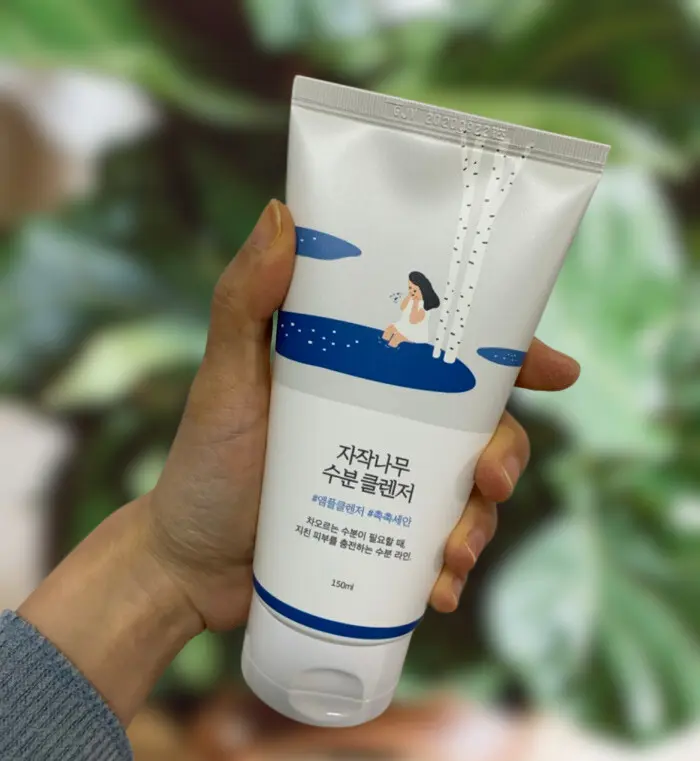
I tried Round Lab Birch Juice Moisturizing Cleanser quite a while ago, and the cleanser is still one of the most pleasant, mildly foaming gel cleansers I’ve used. My mother-in-law stole my first tube because it was so gentle on her very dry skin.
Round Lab Birch Juice Moisturizing Cleanser contains natural surfactants derived from coconut that foam beautifully to remove impurities. In addition to cleansing the skin’s surface, the Round Lab Birch Cleanser travels deep into pores to prevent buildup and blemishes, all without compromising the skin’s barrier function. It’s gentle yet effective, leaving skin clean, bright, and hydrated.
Round Lab Birch Juice Moisturizing Cleanser effectively rinses impurities without excess product or prolonged scrubbing. When rinsing, gently wet your face with warm water, massage a pea-sized amount of the cleanser over the skin in circular motions, rinse clean, and pat dry. This is a fantastic second cleanser for all skin types, and I recommend it for those with dry, aging skin.
Please read Adela’s in-depth review of the Round Lab Birch Juice Moisturizing Cleanser.
Best suited for: Dry, aging skin
pH: 5.5
Comedogenic Ingredients: Butylene glycol (1/5), Hexylene Glycol (2/5)
Pros:
- Sulfate-free, alcohol-free, fragrance-free, and essential oil-free
Cons:
- Sodium Methyl Cocoyl Taurate and Sodium Cocoyl Isethionate are possible fungal acne-triggering ingredients.
- Citric acid is a possible irritant
Price: $12-$16
Round Lab Birch Juice Moisturizing Cleanser Ingredients List (last check 2025)
Water, Glycerin, Sodium Cocoyl Alaninate, Lauryl Hydroxysultaine, Disodium Cocoamphodiacetate, Sodium Methyl Cocoyl Taurate, Acrylate/C10-30 Alkyl Acrylate Crosspolymer, Betula Alba Juice(10,000 Ppm), Butylene Glycol, Sodium Hyaluronate, Hyaluronic Acid, Sodium Chloride, Glyceryl Glucoside, Ascorbic Acid, 1,2-Hexanediol, Artemisia Annua Extract, Anthemis Nobilis Flower Oil, Pinus Sylvestris Leaf Oil, Quillaja Saponaria Bark Extract, Caprylyl Glycol, Coco-Glucoside, Glyceryl Caprylate, Sodium Cocoyl Isethionate, Hexylene Glycol, Citric Acid, Disodium EDTA.
Surfactant Active Humectant Soothing herbs Possible irritant
Ingredients referred from the Round Lab official website.
10. SKIN 1004 Madagascar Centella Ampoule Foam

I am impressed with this cleansing gel for putting Centella Asiatica Extract as the main ingredient. Centella Asiatica Extract from Madagascar is SKIN1004’s key selling point for its skin-firming, softening, smoothing, and moisturizing effect. It is also rich in various vitamins and minerals and is used mainly for anti-aging purposes in skincare. That explains the bouncy and moisturizing properties of this foaming cleanser.
This cleansing gel uses gentle surfactants mainly derived from plants here, with mostly 1/7 safety scores on CosDNA. This cleanser contains several skin-loving ingredients like Glycerin, Sodium Hyaluronate, Cocoa, and other herbal extracts.
The cleansing gel produces bouncy, soft, and rich bubbles upon lathering with water. It gently whisks away dirt and impurities inside my pores while keeping my skin soft and smooth. It is reasonably priced (you can get this for $8 during sales), gentle, hydrating, and effective enough for all skin types.
Best suited for: All skin types
pH: 5.5
Comedogenic Ingredients: Butylene glycol (1/5)
Pros:
- Sulfate-free, alcohol-free, fragrance-free, and essential oil-free
- Fungal acne safe
- Budget-friendly
Cons:
- Citric acid is a possible irritant
Price: $8-$15
SKIN 1004 Madagascar Centella Ampoule Foam Ingredients List (last checked 2025)
Centella Asiatica Extract, Sodium Cocoyl Isethionate, Glycerin, Water, Sodium Methyl Cocoyl Taurate, Coco-Betaine, Potassium Cocoyl Glycinate, 1,2-Hexanediol, Sodium Chloride, Potassium Cocoate, Potassium Benzoate, Polyquaternium-67, Citric Acid, Dextrin, Sodium Bicarbonate, Theobroma Cacao (Cocoa) Extract, Disodium EDTA, Sodium Acetate, Butylene Glycol, Coptis Chinensis Root Extract, Sodium Hyaluronate, Eclipta Prostrata Extract, Coccinia Indica Fruit Extract.
Ingredients referred from YesStyle*.
Surfactants Herbs Humectant/Moisturizing Possible irritant
Final Thoughts
There are many Korean water-based cleansers. How do you know which one to choose? Often, people go for foaming cleansers that leave their skin feeling squeaky clean and tight. However, this damages your skin’s natural barrier and increases oil production and acne.
Korean water-based cleansers are designed to protect the skin’s natural barrier layer and prevent stripping of natural oils during cleansing. Choosing a low-pH cleanser, preferably with a pH below 5.5, is essential, especially if you have oily or acne-prone skin. Also, look at the ingredients list before you buy a product (I like to use CosDNA or SkinCarisma) and avoid products that contain ingredients with a comedogenic rating of 3 and above.
So, pay attention to how your skin feels after cleansing. If it feels tight and dry, you’ve likely overdone it.
If you suspect that you may be suffering from fungal acne, you will also need to check the ingredients list to ensure that your cleanser does not contain any ingredients likely to trigger it.
I hope my post has given you helpful information regarding finding the perfect cleanser.
I enjoyed creating this post, and I learned a lot myself! After all my research, I’m pretty happy sticking with my current water-based cleanser – the B_LAB Matcha Hydrating Foam Cleanser*. However, if it were discontinued tomorrow, I would choose Papa Recipe Blemish Enzyme Powder Cleanser* or the Beplain Mung Bean pH-balanced Cleansing Foam*.
Show Me Proof
- Korting, Hans Christian, and Otto Braun-Falco. “The effect of detergents on skin pH and its consequences.” Clinics in dermatology 14, no. 1 (1996): 23-28.
- Hawkins, Stacy, Bivash R. Dasgupta, and Kavssery P. Ananthapadmanabhan. “Role of pH in skin cleansing.” International Journal of Cosmetic Science 43, no. 4 (2021): 474-483.
- Bernstein, Eric F., Charles B. Underbill, Jouni Lakkakorpi, Cherie M. Ditre, Jouni Uitto, Ruey J. Yu, and Eugene Van Scott. “Citric acid increases viable epidermal thickness and glycosaminoglycan content of sundamaged skin.” Dermatologic surgery 23, no. 8 (1997): 689-694.
- Araújo, Lorena Ulhôa, Andrea Grabe-Guimarães, Vanessa Carla Furtado Mosqueira, Claudia Martins Carneiro, and Neila Márcia Silva-Barcellos. “Profile of wound healing process induced by allantoin.” Acta Cirurgica Brasileira 25 (2010): 460-461.
- Kim, Su-Yeon, and Gap-Soon Moon. “Photoprotective effect of lotus (Nelumbo nucifera Gaertn.) seed tea against UVB irradiation.” Preventive Nutrition and Food Science 20, no. 3 (2015): 162.
- Wei, Kang, Congyin Guo, Jiangxiong Zhu, Yang Wei, Meirong Wu, Xiaodong Huang, Mu Zhang et al. “The whitening, moisturizing, anti-aging activities, and skincare evaluation of selenium-enriched mung bean fermentation broth.” Frontiers in Nutrition 9 (2022): 837168.
